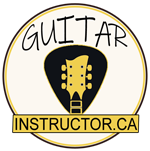
[ad_1]
Learning to play the guitar can be an incredibly rewarding experience. Whether you’re picking up the guitar for the first time or you’ve dabbled in the past, teaching yourself how to play can be a fun and fulfilling process. This beginner’s guide will provide you with the tips and resources you need to start your journey into the world of guitar playing.
Understanding the Basics
Before you begin, it’s important to understand the basics of the guitar. The guitar has six strings, and each string is assigned a letter name and a number. The thickest string is the 6th string and is called “E,” while the thinnest string is the 1st string and is also called “E.” The other strings are named A, D, G, and B, respectively.
It’s also important to familiarize yourself with the different parts of the guitar, such as the body, neck, frets, and strings. Understanding the parts of the guitar will help you become more comfortable with the instrument as you start to learn to play.
Choosing the Right Guitar
When it comes to choosing a guitar, there are a few different options to consider. Acoustic guitars are a popular choice for beginners because they are versatile and can be played without the need for an amplifier. Electric guitars, on the other hand, are better suited for rock and pop music and require an amplifier to produce sound. The choice between acoustic and electric will depend on the style of music you want to play.
Another important factor to consider is the size of the guitar. For children and smaller adults, a 3/4 size guitar may be more comfortable to play. It’s also a good idea to take your budget into account when choosing a guitar. While it’s possible to find a quality guitar at a reasonable price, investing in a higher-quality instrument can make a significant difference in the sound and playability of the guitar.
Learning the Basics of Guitar Playing
Once you have your guitar, it’s time to start learning the basics of guitar playing. One of the first things you’ll want to learn is how to hold the guitar properly. Sit up straight with the guitar resting on your right thigh (if you’re right-handed) or your left thigh (if you’re left-handed). Your strumming hand should be positioned over the sound hole, and your fretting hand should be positioned behind the neck of the guitar.
Next, you’ll want to learn some basic chords. Chords are the foundation of guitar playing and are essential for playing songs. Start with simple open chords such as G, C, D, E, and A. Practice transitioning between these chords until you can play them fluently without pausing or hesitating.
Learning from Online Resources
There are countless online resources available for learning to play the guitar. Websites like Ultimate Guitar, Justin Guitar, and Guitar Tricks offer comprehensive tutorials, lessons, and resources for players of all skill levels. Many of these resources offer free content, making them an excellent option for beginners.
YouTube is another valuable resource for learning to play the guitar. Many professional musicians and guitar instructors offer free lessons and tutorials on YouTube, covering a wide range of topics from basic chord progressions to advanced soloing techniques. Take advantage of these free resources to supplement your learning and expand your skills.
Setting Realistic Goals
As you begin your journey of teaching yourself guitar, it’s important to set realistic goals for yourself. Learning to play the guitar takes time and dedication, and progress may be slow at first. Set small, achievable goals for yourself, such as mastering a new chord or learning a simple song. Celebrate your accomplishments along the way and don’t get discouraged if you encounter challenges.
Practicing Consistently
Consistent practice is essential for improving your guitar playing skills. Set aside time each day to practice, even if it’s just for 15-30 minutes. Regular practice will help you build muscle memory, develop finger strength and dexterity, and improve your overall playing technique. Consider creating a practice schedule or routine to help you stay on track with your learning.
Joining a Community
Connecting with other guitar players can be a valuable source of motivation and support. Consider joining online forums, social media groups, or local guitar meetups to connect with other players. Engaging with a community of fellow guitar enthusiasts can provide you with encouragement, inspiration, and opportunities to learn from others.
Seeking Professional Instruction
While teaching yourself guitar can be a fulfilling experience, seeking professional instruction can also be incredibly beneficial. A qualified guitar instructor can provide personalized guidance, feedback, and instruction tailored to your individual learning needs. Consider taking private lessons, enrolling in group classes, or participating in workshops to supplement your self-teaching journey.
Conclusion
Teaching yourself to play the guitar can be a rewarding and fulfilling experience. With dedication, patience, and the right resources, you can develop your skills and become a proficient guitar player. Remember to start with the basics, choose the right guitar for your needs, and utilize online resources and community support. Setting realistic goals, practicing consistently, and seeking professional instruction can also help you progress on your guitar playing journey. Embrace the process, stay persistent, and enjoy the journey of learning to play the guitar!
[ad_2]
